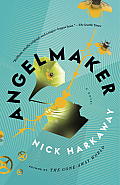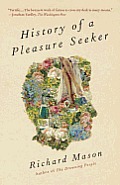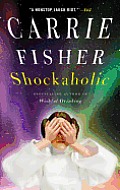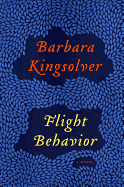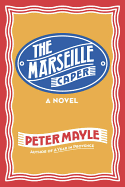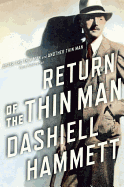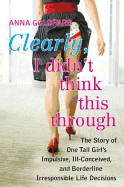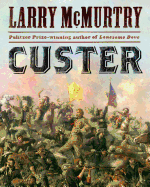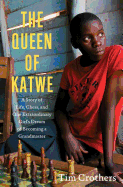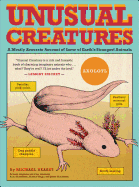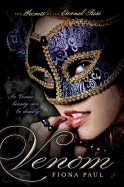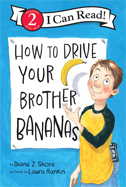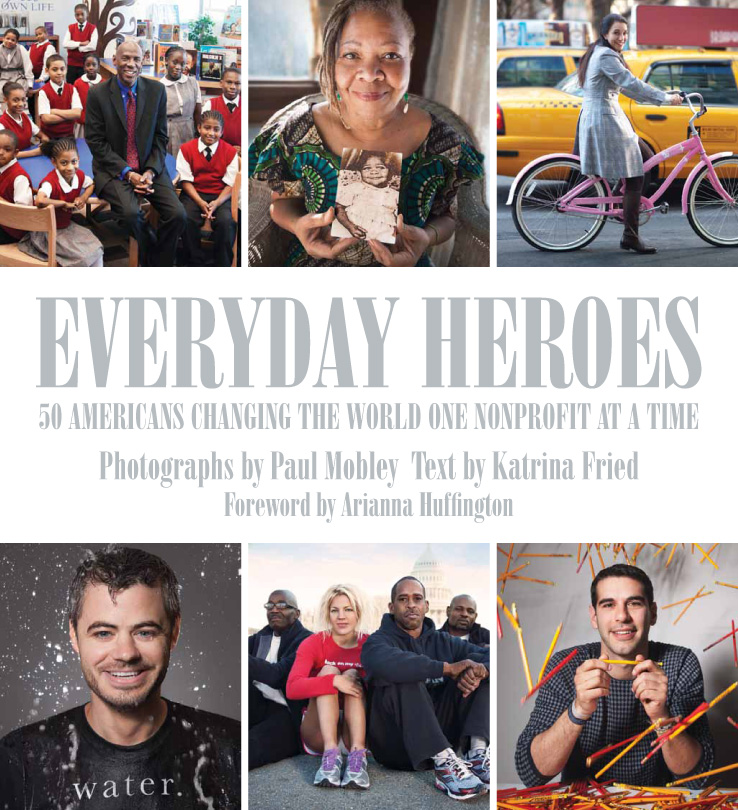 Everyday Heroes: 50 Americans Changing the World One Nonprofit at a Time (Welcome Books) brings together 50 provocative and inspiring stories of nonprofit organizations working for social change and justice across United States. Each of these nonprofits responds to a specific community, yet each has grown out of one person's experience that revealed an unaddressed social need; each organization was founded because an individual felt his or her talents as an entrepreneur and leader could make a difference. Passion and persistence (and success) are the watchwords that writer Katrina Fried and photographer Paul Mobley (American Farmer: Portraits from the Heartland) capture on every page as they celebrate these dedicated agents of change. Everyday Heroes will serve to inspire readers to have faith, hope and new kinds of charity.
Everyday Heroes: 50 Americans Changing the World One Nonprofit at a Time (Welcome Books) brings together 50 provocative and inspiring stories of nonprofit organizations working for social change and justice across United States. Each of these nonprofits responds to a specific community, yet each has grown out of one person's experience that revealed an unaddressed social need; each organization was founded because an individual felt his or her talents as an entrepreneur and leader could make a difference. Passion and persistence (and success) are the watchwords that writer Katrina Fried and photographer Paul Mobley (American Farmer: Portraits from the Heartland) capture on every page as they celebrate these dedicated agents of change. Everyday Heroes will serve to inspire readers to have faith, hope and new kinds of charity.
Katrina, what sparked your initial interest in nonprofit organizations that have sprung out of an individual's drive be an agent of social change?
The idea for the book was born about five years ago; America was in the early grip of the recession and confidence in our political and governmental leaders was deeply compromised. The notion that we had to become architects of our own destiny--both as individuals and as a country--seemed more critical than ever. By spotlighting the everyday heroes among us--individual agents of hope and change who had committed themselves to improving the lives of others--I hoped to challenge and empower others to lead and give within their own communities.
 As you began to pull together the list of possible individuals and organizations to include in Everyday Heroes, what challenges did you face?
As you began to pull together the list of possible individuals and organizations to include in Everyday Heroes, what challenges did you face?
Each stage of developing the book presented its own kind of challenge. When I began exploring potential subjects, I knew relatively little about the modern landscape of domestic philanthropy, and so the first and greatest challenge I faced was to educate myself, to become as expert as possible within the limited amount of time available. Even after a year of research and hundreds of hours spent interviewing accomplished social entrepreneurs, I was still on a steep learning curve.
With hundreds, if not thousands, of worthy individuals and organizations whose contributions are deserving of recognition, the process of narrowing down my selections to just 50 nonprofit leaders was unquestionably the most difficult part of the second stage of developing the book. Once the heroes were chosen, the third significant challenge I faced was how to make each hero's profile distinct and equally compelling. Success relied greatly on getting each of these men and women to openly share their personal stories with me, as well the stories of their organizations. The goal was to weave together these two narratives and thereby put a unique human face on every cause.
What criteria did you use to select the 50 nonprofit leaders?
They are all founders and/or leaders of successful nonprofits that represent a diverse range of causes and demographics. Offspring of the marriage of entrepreneurship and community service, they nearly all self-identify as social entrepreneurs. They range widely in ages and backgrounds. They are all Americans. They are also what I would categorize as "out of the box" visionaries, whose often unorthodox techniques set them apart from the traditional nonprofit model.
The ultimate goal was to curate a group of individuals and causes whose diversity provided as many opportunities for self-identification as possible. My hope is that everyone who picks up this book will discover a story and a cause that speaks to them, no matter their background, their politics, or their personal values.
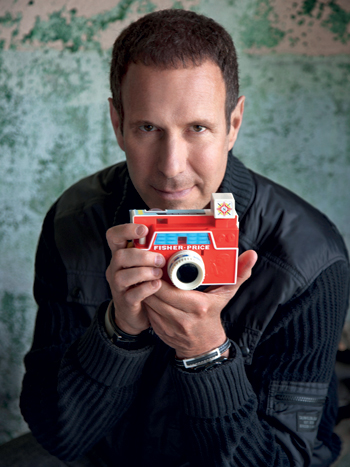 Paul, following your trip to Haiti to photograph Dr. David Vanderpool and his work there, you said, "I looked through the camera in a different way after that experience." How did you made your visual choices?
Paul, following your trip to Haiti to photograph Dr. David Vanderpool and his work there, you said, "I looked through the camera in a different way after that experience." How did you made your visual choices?
I spent time learning about their missions, what they were doing to give back. That seemed to "shape the photograph." I posed, lit and expressed my vision for each picture after I had read the backgrounds of each. Sometimes my favorite photographs are made without knowing anything about my subject. For this project, though, it was important for me to know about them. I think it helped complete the final image.
The photographs accompanying each profile are superb in capturing the energy, personality and context of each person. And so many exhibit great graphic wit, too--like the one of Adam Braun, the director of Pencils of Promise, with its hanging mobiles of pencils. How did you develop an approach to capture and communicate the essence of the person or organization?
Throughout the project, I wanted to mix location pictures with strong graphic images in the studio. In the case of Adam Braun, the choice came pretty quickly. Adam's a young, smart, energetic guy, fun and easy to work with. I asked him if he would try my idea of a stylized graphic image featuring those assemblages of pencils. He was completely on board. When you get that kind of trust from your subject, you can get a great picture. The picture with Taryn Davis, executive director of the American Widow Project, came about in a completely different way. I wanted it to "scream" with emotion. When she arrived with the flag and her husband's boots, I knew it was going to be good. Photographing at the location we used was imperative in that case. It reinforced where she was from and her story much better.
If each of you were invited to a presentation and you were allowed to read only one of the profiles from Everyday Heroes, which one would you offer to the audience? And why would you have chosen that particular one?
Katrina: That's a very tough question--like asking which one of my children I love the best! But if pressed... what I will say is that as an example of an individual whose compelling personal story truly captures the spirit of everyday heroism, and whose organization has achieved astonishing success and scalability, Geoffrey Canada, CEO of Harlem Children's Zone, stands as an inspiration. Like many of the heroes in this book, his commitment to help others is deeply motivated by his own early experiences, and his achievements are proof positive that one person truly can make a difference.
Paul: I would choose either a story about Dr. David Vanderpool and the Mobile Medical Disaster Relief work in Haiti or one about Taryn Davis and the American Widow Project--and choosing between them would be hard for me.
I was especially struck by a quote in the book from Michael Weinstein that reminds us, "People don't do a lot of things if they think they can't or that the world won't allow them to.... people will want to do the right thing, they just don't know how or where to go to do it." Do you have a favorite quote that you feel exemplifies an aspect of what these organizations have done to open up new avenues for lasting change?
Katrina: When Robert Egger founded DC Central Kitchen, he reinvented the model of feeding the hungry by training the homeless to prepare the food they were feeding to themselves and others like them. Egger says, "A great nonprofit doesn't try to solve the problem, it tries to reveal the power we have as a community to solve the problem." That, to me, epitomizes the philosophy of nearly every organization featured in Everyday Heroes. And after talking to dozens of successful social entrepreneurs, I'd say the most universally defining quality of philanthropy today is the shift in the relationship between the giver and the receiver. Gone are the days of the traditional donor-beneficiary relationship. The handout has been replaced by the handshake. Today's nonprofit reformers are interested in creating meaningful equal partnerships to empower communities and individuals to raise themselves out of poverty.
Paul: I was humbled by Dr. Vanderpool's telling me that he could have "three nice cars and a big house" but he lives very simply so he can do this kind of work. That sticks with me.
If you encountered a skeptic who said that the profiles in Everyday Heroes highlight a limited number of feel-good success stories that impact a small population, what would you say to them to get them to pick up the book and read a few profiles that might challenge their preconceptions and biases?
The variety of causes, ideas, and narratives chronicled in Everyday Heroes does go to prove that there are as many different ways to give as there are human beings. With each hero's story, there is yet another entry point to the undercurrent of generosity that flows around us. The contributions being made by each of these heroes far transcends their literal impact. The real take-away is this: There is no contribution too small or insignificant. Whether you choose to show kindness to a loved one or a neighbor, to volunteer, to donate, or to build your own movement—you are helping to grow a culture of giving, from which--to use a favored phrase among these entrepreneurs--a thousand flowers will bloom. --John McFarland, author
Katrina Fried and Paul Mobley: Doing the Right Thing
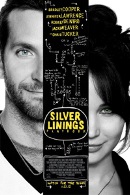 Quick loves David O. Russell's adaptation and feels as though "the spirit of what I was trying to do is respectfully preserved. It's a Russell film, and he had to make changes to make the story work in two hours of visual time, but my friends and family have seen it and they saw me and my story up there as well, which is a beautiful thing. Like the book, it's a love song to Philly, my home city. Jennifer Lawrence is amazing as Tiffany, and her interpretation is closest to the book. Anupam Kher plays Dr. Cliff and he also stays very close to the book. He has starred in hundreds of Bollywood films, but it was his dream to be in a film with De Niro. When he got the part, he wrote me an e-mail thanking me for writing a well-rounded Indian character that gave him a chance to fulfill his life-long dream. When you put art into the world, you create opportunities for others. I never dreamed that would happen when I was writing, but it did. So as you can see, it's been an exciting time. I fully embrace the film, and encourage people to read the book first. You need both for the complete experience."
Quick loves David O. Russell's adaptation and feels as though "the spirit of what I was trying to do is respectfully preserved. It's a Russell film, and he had to make changes to make the story work in two hours of visual time, but my friends and family have seen it and they saw me and my story up there as well, which is a beautiful thing. Like the book, it's a love song to Philly, my home city. Jennifer Lawrence is amazing as Tiffany, and her interpretation is closest to the book. Anupam Kher plays Dr. Cliff and he also stays very close to the book. He has starred in hundreds of Bollywood films, but it was his dream to be in a film with De Niro. When he got the part, he wrote me an e-mail thanking me for writing a well-rounded Indian character that gave him a chance to fulfill his life-long dream. When you put art into the world, you create opportunities for others. I never dreamed that would happen when I was writing, but it did. So as you can see, it's been an exciting time. I fully embrace the film, and encourage people to read the book first. You need both for the complete experience."


 As you began to pull together the list of possible individuals and organizations to include in Everyday Heroes, what challenges did you face?
As you began to pull together the list of possible individuals and organizations to include in Everyday Heroes, what challenges did you face? Paul, following your trip to Haiti to photograph Dr. David Vanderpool and his work there, you said, "I looked through the camera in a different way after that experience." How did you made your visual choices?
Paul, following your trip to Haiti to photograph Dr. David Vanderpool and his work there, you said, "I looked through the camera in a different way after that experience." How did you made your visual choices?